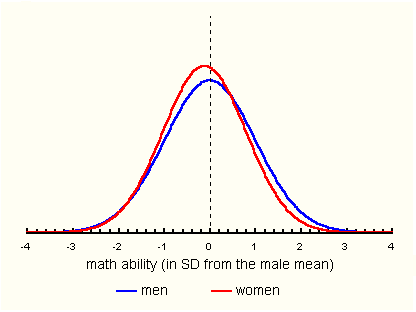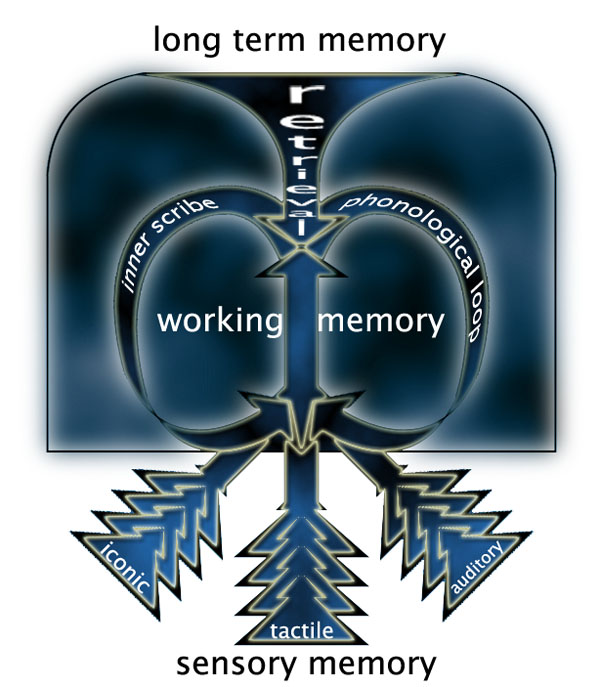 While the scientific findings that male and female brains are anatomically and functionally different, statistically, is still quite controversial on a political level, on a purely scientific level it is becoming well established. Doreen Kimura is one of several prolific women cognitive scientists who are brave enough to buck the political storm in order to pursue scientific truth. Camilla Benbow is another.
While the scientific findings that male and female brains are anatomically and functionally different, statistically, is still quite controversial on a political level, on a purely scientific level it is becoming well established. Doreen Kimura is one of several prolific women cognitive scientists who are brave enough to buck the political storm in order to pursue scientific truth. Camilla Benbow is another.In this article published in Sexualities, Evolution and Gender, Kimura plainly lays out the basic argument and evidence.
Many reliable anatomical brain differences have been found to differentiate men and women, from basic structures such as the hypothalamus, to differences in systems connecting the two hemispheres, such as the anterior commissure. Some of these have been reviewed in my book......We don’t yet know the significance of such differences for cognitive function, but to describe them as fiction is to deny the careful investigations of many respected scientists (e.g., Allen and Gorski 1990, 1991; Allen, Hines, Shryne and Gorski 1989; Allen, Richey, Chai and Gorski 1991). Although we now have a fair understanding of how brain systems work in mediating certain cognitive functions such as memory, language, and the like, we are still far from understanding how individual differences, the variation in such functions from one type of person to another, are mediated by the brain. However, it must follow that if two groups (such as males and females, left-handers and right-handers, or masculine and feminine gender types) differ reliably in some behaviour not simply dependent on physical differences, then their nervous systems must also differ in some way. Where else could the behavioural differences reside? This is just as true of learned as of unlearned behaviours. Brain differences underlying cognitive differences need not, however, be visible in simple structural features. They may take the form of differing organizational mechanisms not apparent by simply viewing the external brain.
This Scientific American article by Kimura presents the argument more methodically, and at greater length.
Men and women differ not only in their physical attributes and reproductive function but also in many other characteristics, including the way they solve intellectual problems. For the past few decades, it has been ideologically fashionable to insist that these behavioral differences are minimal and are the consequence of variations in experience during development before and after adolescence. Evidence accumulated more recently, however, suggests that the effects of sex hormones on brain organization occur so early in life that from the start the environment is acting on differently wired brains in boys and girls. Such effects make evaluating the role of experience, independent of physiological predisposition, a difficult if not dubious task. The biological bases of sex differences in brain and behavior have become much better known through increasing numbers of behavioral, neurological and endocrinological studies.
Read the entire article here, it is quite fascinating.
This is a brief list of scholarly research supporting the concept of "innate differences" in neuroanatomy and cognition in males and females. It is a very abbreviated list, but it serves to introduce the evidence. For a much longer list, consult this reference list from one of Kimura's articles. Scroll down to the list, and continue scrolling. There are 111 citations, and that list is far from complete.
I have posted on this topic before--here, here, and here.
The research continues, and the weight of research--new and old--points to significant cognitive sex differences, or if you prefer, gender differences or gender disparities.
Politically, this is not a popular topic, and politically inclined "scientists" will more easily cling to the political line. It is difficult to get funding for this type of research, and publishing in some mainstream journals is difficult. Even university presidents can fall from grace if they forget the politically correct stance, and deviate from it. This has not discouraged the very persistent women and men of cognitive science.
Neither men nor women are superior to the other as groups. Both groups have statistical strengths and weaknesses. A wise society will seek to understand its members, rather than try to sweep under the rug any scientific findings that are inconvenient to a dominant political viewpoint.
Addendum: This Guardian article by Simon Baron-Cohen contains a link to a test you can take to determine if you have a male brain or a female brain. Just looking at your genitalia or your chromosome map will not tell you that. Regardless of your chromosomes, your brain has a mind of its own, perhaps of a different gender than your body. Are you willing to find out?






